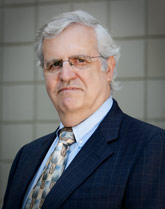
Handy Links
SLAC News Center
SLAC Today
- Subscribe
- Archives: Feb 2006-May 20, 2011
- Archives: May 23, 2011 and later
- Submit Feedback or Story Ideas
- About SLAC Today
SLAC News
Lab News
- Interactions
- Lightsources.org
- ILC NewsLine
- Int'l Science Grid This Week
- Fermilab Today
- Berkeley Lab News
- @brookhaven TODAY
- DOE Pulse
- CERN Courier
- DESY inForm
- US / LHC
SLAC Links
- Emergency
- Safety
- Policy Repository
- Site Entry Form

- Site Maps
- M & O Review
- Computing Status & Calendar
- SLAC Colloquium
- SLACspeak
- SLACspace
- SLAC Logo
- Café Menu
- Flea Market
- Web E-mail
- Marguerite Shuttle
- Discount Commuter Passes
-
Award Reporting Form
- SPIRES
- SciDoc
- Activity Groups
- Library
Stanford
Around the Bay
From the Acting Director of SSRL

With the growth of photon science at SLAC, I thought it would be interesting to discuss the Stanford Synchrotron Radiation Lightsource's research portfolio and how it has been changing over the past several years. However, first I would like to give a short review of the past year. 2009 has been a great year for SSRL with an average uptime of 99 percent (with less than one week to go in the run) and excellent user satisfaction. This level of uptime and user satisfaction always amazes me when I reflect that this is a 24/7 operation. Not only must the accelerator operate flawlessly, the beam lines must be made ready on a daily basis for the rapidly changing sets of users that cycle through the lab. In many respects, this is much like a production line where dedicated support staff are critical to the smooth operation of the program, whether it is making sure that the SPEAR3 storage ring runs day in and day out, setting up for a new experiment or replacing a failed piece of equipment on short notice. Although the SSRL annual shutdown starts on August 10, everyone will be busy in a different ways with maintenance and upgrade activities for the next few months until the user run cycle starts again for another nine months.
Other milestones we have met this year include the finishing of the SPEAR3 beamline upgrade project, with the completion of three stations on Beamline 4 and successful routine user operation at 200 mA in top-off mode. This mode of operation was the result of hard work from the accelerator, beamline and Radiation Physics Department staff in close cooperation with the Department of Energy Site Office. Ultimately, this mode of operation will allow us to deliver stable beams at nearly constant current at up to 500 mA. Finally, DOE has come through this year with almost 10 million dollars to enable SSRL to undertake badly needed infrastructure and beamline upgrade projects.
As I mentioned at the beginning of this article, I wanted to discuss the changing experimental portfolio at SSRL. Early in SSRL's history, the high profile areas were in the development of X-ray absorption spectroscopy, surface diffraction and core level photoelectron spectroscopy. These techniques are now mature and are as strong as ever, being applied to real world applications ranging from understanding photosynthesis to understanding how advanced batteries work to the development of gate dielectrics for the integrated circuits used in the PlayStation3. With the high brightness of SPEAR3, new techniques are being developed and added to the capabilities being made available to users. One of the new research areas is microscopy over a wide range of length scales. Focused beams at the micron scale are being used at Beamline 2-3 to study how and where metals accumulate in plants and fish in the environment. In addition, improvements in the focusing capabilities at Beamline 12-1 have allowed protein crystals as small as 5 microns to be studied. A microscope employing zone plates to focus the beam is under development and will soon provide 30 nm beams to study properties of magnetic domains at Beamline 13-1. Not only can X-rays be focused to probe materials in a small spot, but they are being used in an actual X-ray microscope—at Beamline 6-2—that provides 2- and 3-dimensional images in real space at 30 nm resolution, showing objects ranging from biomaterials such as bones and teeth to advanced fuel cell materials and nanostructures. Rounding out SSRL's imaging capabilities is the lensless imaging station at Beamline 13-3, which uses the two dimensional pattern of soft X-rays scattered from the sample to image nanostructures at resolutions better than 30 nm. The extreme capabilities of the Linac Coherent Light Source will make it possible to use this technique to image objects at Ångström resolution. Finally, the advent of the LCLS has also resulted in a renewed interest in time-resolved studies at SPEAR3. This has been made practical through the development of the low-alpha mode to give shorter pulses and special fill patterns, for specific high intensity bunches in SPEAR3 that can be synchronized with a pulsed laser at the beamline experiment.
In this short article, I have been able to give only an incomplete summary of research at SSRL, but I encourage you to scan through the SSRL Science Highlights for a more complete picture of the exciting results that are coming out every week.
